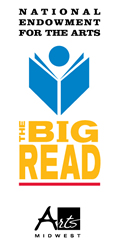Teaching Tips
Click here for helpful documents to help you start your class discussion today!
Emily Dickinson Lessons
We are collecting great Emily Dickinson lessons from our educating partners and from around the web. See below:
Video:
Emily: Her Real Self http://vimeo.com/8116641
Lessons:
Lesson plans from the Emily Dickinson Museum. These include lessons on language, interpretation, place, and context, as well as lessons that came from a National Endowment for the Humanities Teacher Workshop in 2009. Click the “education” tab from the top menu. http://www.emilydickinsonmuseum.org
Also, NEA Big Read Emily Dickinson lessons. The lessons form a 10-day course of study, and detail specific poems, activities, and homework. Kore Press has teachers’ booklets of this material, but it is also entirely available on the NEA Big Read website. Readers’ guides and audio are also wholly available in this way. http://www.neabigread.org/books/dickinson/index.php
Plus, an Emily Dickinson lesson from Tucson High's Amy Rusk, with Lisa Bowden:
Emily%20Dickinson%20Chronology%20Lesson
Texting Emily
Texting is a perfect way for creative writers to study Dickinson's mastery of compression and concision. Students can TEXT their original short poem to a virtual Magic Box (520-329-4958) for possible Stories That Soar performance or radio publication. Be sure to include student's name and school!
Why texting? In this article, The English Journal discusses texting as code-switching -- students recognize the different languages they use with each other and in more formal contexts. Order a summary of this article and citation here.
FREE Field Trips to the UA Poetry Center
The world-class UA Poetry Center creates customized field trips based on the age and focus of your class. Field trips are interactive, fully consistent with state language arts poetry standards, and free. The Center does need a few weeks' time to design and prepare the best possible experience for your students, so be sure to plan ahead. Email Timothy Dyke to schedule your free field trip!
Check back soon for more tips and ways to get involved! For general inquiries or media information, email kore@korepress.org or call us at 520-327-2127. |
What other schools are doing:
Catalina Foothills High School
Dave Sudak with his AP Lit & Comp Students
More than 80 AP English students will be "using" Dickinson to introduce key poetic techniques, with an emphasis on irony and structure. Educator Dave Sudak will rely a great deal on Helen Vendler's recent tome, and also Camille Paglia's essays (as they appear in her most excellent Break, Blow, Burn and also extracts from her famously entertaining and insightful Sexual Personae).
Museum School for the Visual Arts (MSVA)
Andrea Burk will connect her students to Emily Dickinson in two ways:
1. Students are studying 19th century illustration, etchings, broadsides and botanical prints, and considering ways to incorporate contemporary semiotics and styles while staying true to the original aesthetics. They will be using this artistic study to interpret Dickinson's writings in ways they consider more relevant to modern youth. They will also apply their hybrid styles to create broadsides and illustrations for writing inspired by Emily Dickinson, written and submitted as part of the Big Read. These original words and images will be collected in an anthology which MSVA students will publish and bind by hand at the end of the project.
2. MSVA students are initiating correspondence with refugee youth from the Owl and Panther Project. Both groups meet in the same space at different times. MSVA youth may send communication with words or only images, but they will somehow describe their lives at the moment. They may also send along botanical specimens we collect on walks around the school. The OPP youth will be encouraged to respond at least once in a similar way: with or without words, perhaps with some token from nature or an otherwise descriptive image. The correspondence among the groups will eventually be left for the youth to maintain. Most of the refugee youth in OPP have a very limited grasp of English, and many of the students at MSVA do feel that their best avenue for communication is art. All participants have the opportunity here to communicate through visual art as a common language.
|

